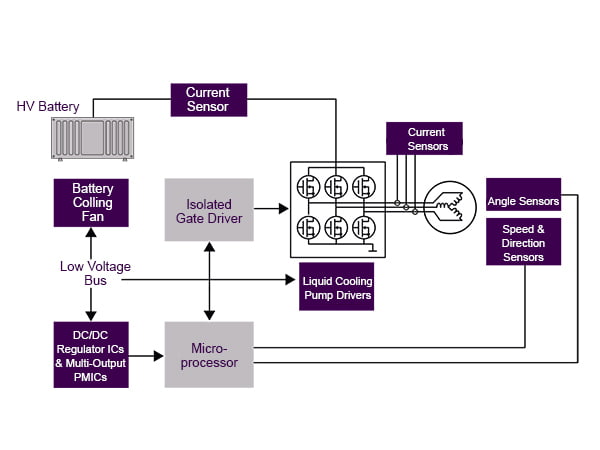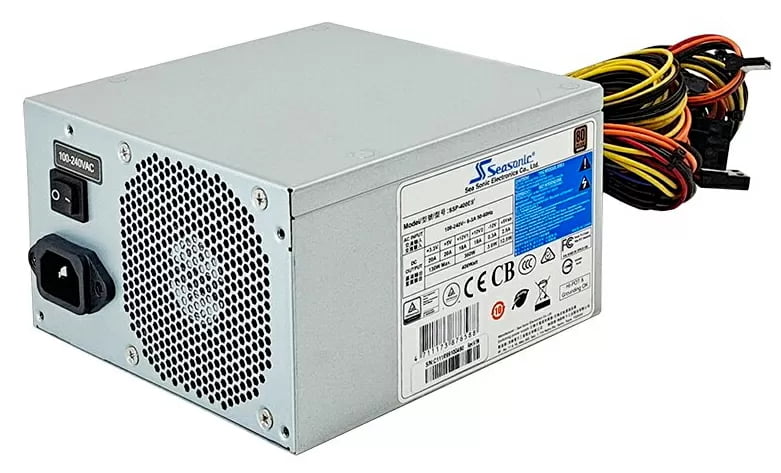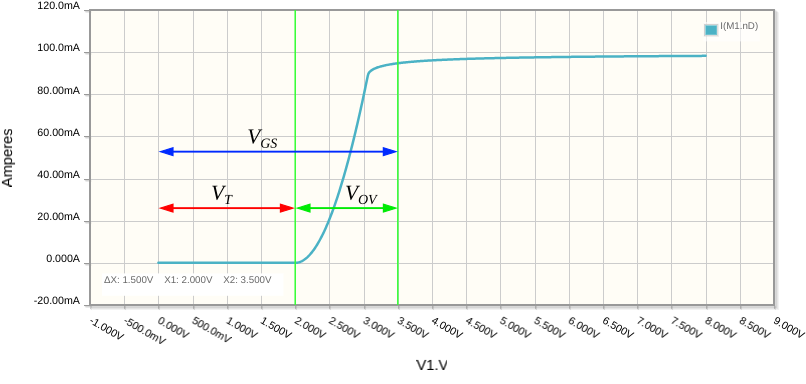In the ever-evolving world of electronic design, understanding MOSFET overdrive voltage is crucial for achieving optimal performance in your circuits. As Taiwan Winsok’s authorized distributor, Olukey brings you this comprehensive guide to help you master this essential concept and make informed decisions for your electronic projects.
What is MOSFET Overdrive Voltage?
MOSFET overdrive voltage (VOV) is defined as the difference between the gate-to-source voltage (VGS) and the threshold voltage (VTH) of the MOSFET. This parameter plays a crucial role in determining the operating characteristics and performance of the device. The mathematical expression for overdrive voltage is:
VOV = VGS – VTH
Understanding overdrive voltage is fundamental for electronic designers because it directly influences several key aspects of MOSFET operation, including:
- Current conducting capability
- Switching speed performance
- Power dissipation
- Overall circuit efficiency
- Device reliability and longevity
The Significance of Overdrive Voltage in Circuit Design
When designing electronic circuits, the overdrive voltage becomes a critical parameter that can make or break your design’s performance. A larger overdrive voltage typically results in lower ON-resistance (RDS(on)), which can be beneficial for power applications. However, this comes with trade-offs that need careful consideration:
Key Considerations for Overdrive Voltage:
- Higher overdrive voltage leads to lower RDS(on), reducing conduction losses
- Increased power consumption in the gate driver circuit
- Potential reliability concerns with excessive gate voltage
- Impact on switching speed and losses
Optimal Overdrive Voltage Selection
Selecting the optimal overdrive voltage requires careful balancing of various factors. Modern MOSFETs typically operate with overdrive voltages ranging from 2V to 10V, depending on the application requirements. The selection process should consider:
- Application requirements (switching frequency, load current, etc.)
- Power efficiency targets
- Thermal management capabilities
- System cost considerations
- Reliability requirements
Common Challenges and Solutions
Working with MOSFET overdrive voltage presents several challenges that designers must address. Through our extensive experience at Olukey, we’ve identified common issues and their solutions:
Challenge 1: Temperature Dependencies
The threshold voltage of MOSFETs varies with temperature, affecting the effective overdrive voltage. Our Winsok MOSFETs feature advanced temperature compensation techniques to maintain stable performance across operating conditions.
Challenge 2: Gate Driver Requirements
Higher overdrive voltages demand more capable gate driver circuits. Olukey offers comprehensive solutions including matched MOSFET and driver combinations from Winsok’s product line.
Challenge 3: Switching Losses
Balancing switching speed with EMI concerns requires careful overdrive voltage selection. Our engineering team provides expert guidance on optimizing these parameters.
Advanced Applications and Considerations
Modern power electronics applications demand increasingly sophisticated MOSFET implementations. High-frequency switching power supplies, motor drivers, and automotive applications each present unique challenges regarding overdrive voltage optimization. Consider the following aspects:
- Resonant switching applications may require precise control of overdrive voltage to optimize switching trajectories
- Synchronous rectification applications benefit from carefully tuned overdrive voltages to minimize losses
- Battery-powered applications need to balance performance with gate drive power consumption
- High-reliability applications require conservative overdrive voltage margins to ensure long-term stability
Industry Trends and Future Developments
The power MOSFET market continues to evolve, with new technologies and approaches emerging regularly. Current trends include:
- Integration of advanced protection features
- Development of MOSFETs with lower threshold voltages
- Implementation of sophisticated temperature compensation mechanisms
- Enhanced ruggedness and reliability features
As Taiwan Winsok’s authorized distributor, Olukey stays at the forefront of these developments, ensuring our customers have access to the latest MOSFET technologies and supporting solutions.
Practical Applications and Case Studies
Let’s examine some real-world applications where proper overdrive voltage management is crucial for system performance:
Case Study 1: Electric Vehicle Traction Inverters
 In electric vehicle applications, MOSFETs must handle high currents while maintaining efficiency. Our experience shows that optimizing overdrive voltage can lead to:
In electric vehicle applications, MOSFETs must handle high currents while maintaining efficiency. Our experience shows that optimizing overdrive voltage can lead to:
- 5-8% improvement in overall system efficiency
- 20-30% reduction in switching losses
- Significant decrease in heat generation
- Extended battery life through reduced power consumption
Case Study 2: Data Center Power Supplies
 In high-reliability server power supplies, careful MOSFET overdrive voltage selection has resulted in:
In high-reliability server power supplies, careful MOSFET overdrive voltage selection has resulted in:
- Improved thermal performance
- Enhanced system reliability
- Lower maintenance requirements
- Reduced energy costs
Frequently Asked Questions About MOSFET Overdrive Voltage
Q: How does overdrive voltage affect MOSFET switching speed?
A: Higher overdrive voltage generally results in faster switching speeds due to reduced channel resistance and increased carrier mobility. However, there’s a practical upper limit where further increases yield diminishing returns and may impact device reliability.
Q: What are the risks of excessive overdrive voltage?
A: Excessive overdrive voltage can lead to:
- Gate oxide stress and potential breakdown
- Increased power consumption in gate drive circuits
- Higher EMI emissions due to faster switching
- Reduced device lifetime
- Potential thermal management issues
Q: How do I calculate the optimal overdrive voltage for my application?
A: The optimal overdrive voltage depends on multiple factors. Here’s a systematic approach:
- Determine the required RDS(on) for your application
- Consider the switching frequency requirements
- Account for temperature variations in your operating environment
- Factor in gate driver capabilities and limitations
- Consider EMI requirements and system constraints
Design Guidelines and Best Practices
Based on our extensive experience working with Winsok MOSFETs, we’ve developed these essential design guidelines:
Temperature Considerations
Always account for temperature effects when setting overdrive voltage:
- Plan for worst-case temperature scenarios
- Consider using temperature compensation circuits for critical applications
- Monitor junction temperature in high-power applications
- Implement appropriate thermal management solutions
EMI Optimization
Balance switching speed with EMI requirements:
- Use gate resistance to control di/dt and dv/dt
- Consider split gate drive configurations for better control
- Implement proper PCB layout techniques
- Use appropriate snubber circuits when necessary
Troubleshooting Common Issues
When working with MOSFET circuits, several common issues related to overdrive voltage may arise. Here’s how to identify and resolve them:
1. Switching Losses Higher Than Expected
Possible causes and solutions:
- Insufficient overdrive voltage – verify gate drive levels
- Excessive gate resistance – optimize for your switching frequency
- Poor layout – minimize gate loop inductance
- Inadequate gate driver – consider upgrading to a more capable driver
2. Thermal Runaway Issues
Prevention and solutions:
- Implement proper thermal design and heatsinking
- Monitor device temperature during operation
- Consider using MOSFETs with better thermal characteristics
- Optimize overdrive voltage for efficiency
Future Proofing Your Designs
As technology continues to advance, considering future requirements becomes increasingly important. Here are key aspects to consider:
- Scalability of your current design
- Compatibility with emerging standards
- Potential for efficiency improvements
- Integration with smart control systems
- Adaptability to changing environmental regulations
Emerging Technologies
Stay ahead of the curve with these emerging MOSFET technologies:
- Advanced trench gate structures
- Super junction architectures
- Integrated current and temperature sensing
- Advanced packaging technologies for better thermal performance
- Smart gate drivers with adaptive control
Partner with Olukey for Your MOSFET Needs
 Understanding and optimizing MOSFET overdrive voltage is crucial for successful electronic design. As the authorized distributor of Winsok products, Olukey offers:
Understanding and optimizing MOSFET overdrive voltage is crucial for successful electronic design. As the authorized distributor of Winsok products, Olukey offers:
- Comprehensive technical support and application guidance
- Access to Winsok’s complete portfolio of advanced MOSFETs
- Custom solution development for specific applications
- Reliable supply chain and logistics support
- Competitive pricing and volume discounts
Why Choose Olukey?
Our deep understanding of MOSFET technologies, combined with our partnership with Winsok, enables us to provide optimal solutions for your power electronics applications. Whether you’re designing a new product or optimizing an existing one, our team is here to help.
Conclusion
MOSFET overdrive voltage optimization remains a critical aspect of modern electronic design. By understanding and carefully considering all the factors discussed in this guide, designers can achieve optimal performance while maintaining reliability and efficiency. Remember that Olukey’s team of experts is always available to assist you in selecting and implementing the right MOSFET solutions for your specific applications.

























